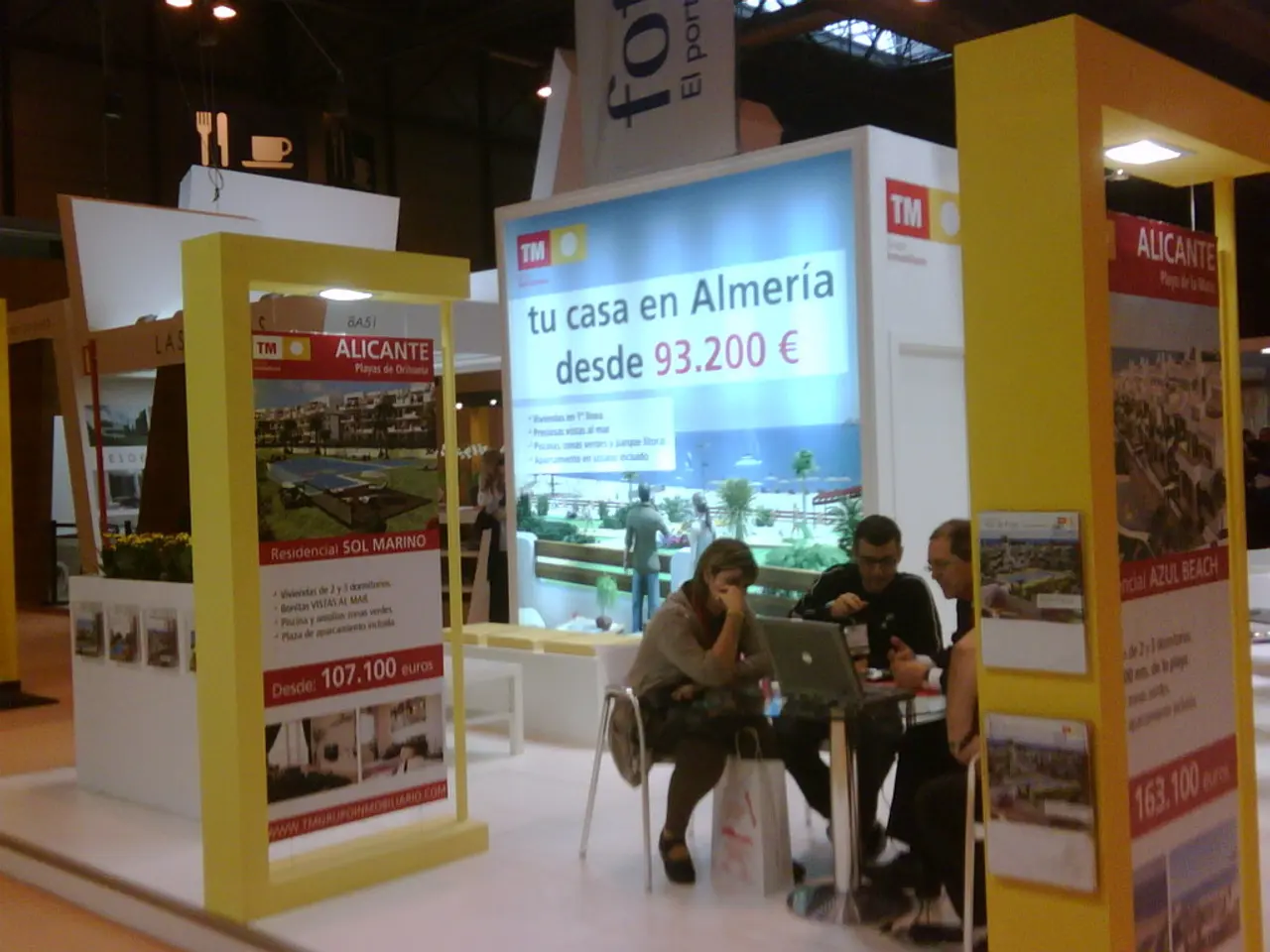Solar Energy Comparison: Solar Thermal versus Photovoltaic Systems
In the realm of renewable energy, two technologies stand out for their potential to revolutionise the way we power our homes and businesses: solar thermal energy and solar photovoltaic (PV) systems. While both harness the power of the sun, their distinct methods of energy conversion and typical applications set them apart in terms of efficiency, performance, and cost.
Solar thermal systems, which convert sunlight directly into heat, boast significantly higher thermal efficiencies compared to PV panels. With thermal efficiencies reaching over 40%, they are highly effective at harnessing solar heat for hot water and space heating, which constitute about 85% of household energy use. In contrast, PV panels convert sunlight into electricity, with typical efficiencies ranging from 15% to 22%. However, PV panel efficiency decreases with increased temperature, as heat negatively impacts their voltage and power output, reducing overall electrical generation efficiency in hot climates.
In terms of performance, solar thermal systems are optimised for heat production and perform extremely well in meeting heating demands, yielding a higher potential for self-consumption and energy savings. PV systems produce electricity, which is versatile but often requires battery storage to maximise self-consumption, adding complexity and cost. Their performance can be sensitive to environmental conditions like temperature and shading.
When it comes to cost, solar thermal systems tend to be more cost-effective, with a typical installed cost of around €11,000, largely due to lower equipment costs and higher efficiency for heat generation. Photovoltaic systems, especially when combined with battery storage to improve self-consumption, are more expensive, with comparable systems costing about €19,500 including installation. The cost difference is influenced by the need for batteries in PV setups, while solar thermal systems directly supply heat, reducing the need for additional energy storage and conversion equipment.
Hybrid photovoltaic-thermal (PVT) systems combine both, achieving electrical efficiencies around 7-8.5% while also producing significant thermal energy with up to 43% thermal efficiency, thus enhancing overall energy output and making better use of the solar input.
In essence, solar thermal systems excel in heat generation efficiency and cost-effectiveness, meeting the major component of household energy demand. PV systems provide versatile electrical energy but at higher cost and lower efficiency, especially as temperatures rise. Hybrid PVT systems offer a balanced approach, improving total energy yield by combining both thermal and electrical outputs.
It's important to note that the intermittency of solar energy production is a challenge, requiring backup or storage solutions. Factors affecting the performance of Solar Thermal Systems include sunlight intensity, system design, and temperature differences. Solar Thermal Systems can achieve efficiencies exceeding 60%, often up to 80% or more, in high-temperature systems (CSP).
The initial cost of solar PV systems can be significant, although costs have been declining. Solar Thermal Energy can be used for industrial processes like food processing, chemical manufacturing, and drying processes. Solar PV systems have a long lifespan, lasting 25 years or more with minimal maintenance.
As of 2023, the global solar energy capacity reached over 760 gigawatts, with solar PV systems being used for utility-scale electricity generation, feeding electricity directly into the grid to meet regional energy demands and reduce reliance on fossil fuels.
In conclusion, while both solar thermal energy and solar PV systems have their unique advantages, understanding their differences can help in making informed decisions when considering renewable energy solutions for homes, businesses, or utility-scale applications.
- Solar thermal systems, with thermal efficiencies over 40%, harness the sun's heat effectively for hot water and space heating, constituting about 85% of household energy use.
- Solar photovoltaic (PV) panels convert sunlight into electricity, but their efficiencies range from 15% to 22%, and they are sensitive to temperature and shading.
- PV systems often require battery storage to maximise self-consumption, adding complexity and cost, while solar thermal systems directly supply heat, reducing the need for additional energy storage and conversion equipment.
- Hybrid photovoltaic-thermal (PVT) systems combine both electrical and thermal outputs, improving overall energy output and making better use of solar input.
- Solar thermal systems excel in heat generation efficiency and cost-effectiveness, meeting the major component of household energy demand.
- PV systems provide versatile electrical energy, but their higher cost and lower efficiency, particularly in hot climates, can be a drawback.
- The intermittency of solar energy production is a challenge, requiring backup or storage solutions, with factors like sunlight intensity, system design, and temperature differences affecting the performance of solar thermal systems.
- In high-temperature systems (CSP), solar thermal systems can achieve efficiencies exceeding 60%, often up to 80% or more.
- The initial cost of solar PV systems can be significant, although costs have been declining, and they have a long lifespan, lasting 25 years or more with minimal maintenance.
- As of 2023, the global solar energy capacity reached over 760 gigawatts, with solar PV systems used for utility-scale electricity generation, feeding electricity directly into the grid for regional energy demands and reducing reliance on fossil fuels.
- To facilitate informed decisions regarding renewable energy solutions, it is crucial to understand the unique advantages and differences between solar thermal energy and solar photovoltaic (PV) systems for homes, businesses, or utility-scale applications. The fields of science, industry, finance, and technology continue to advance these technologies for increased energy efficiency, energy independence, and a reduced carbon footprint.




